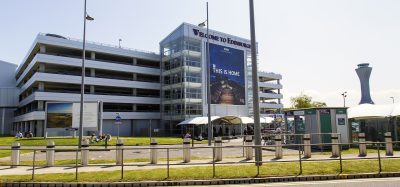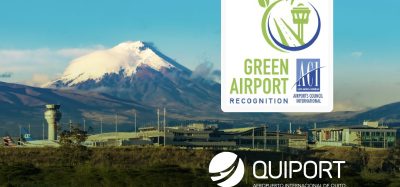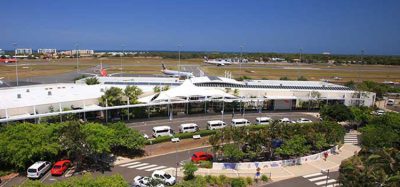Technology vs the elements
Posted: 28 March 2012 | Joshua Paurus, Duty Manager, Airside Operations at Minneapolis–St Paul International Airport | No comments yet
People, process and technology are all part of an effective winter opera – tions strategy. The extent that each component is successfully integrated with the others plays a large role in influencing the outcome of a winter operations event. At Minneapolis-St Paul International Airport (MSP) we have a history of refining these components over the years. With approximately 1,200 operations to and from 135 destinations daily, MSP ranks amongst the busiest airports in the world. This level of activity combined with an average annual snowfall of approximately 50 inches provides us with ample opportunities to test our winter operations skills.
In addition to dedicated, experienced personnel and proven processes, MSP’s Airside Operations department utilises numerous technology tools. These range from systems for current and forecasted weather conditions, aircraft and vehicle tracking, surface condition sensors, runway friction management and more. We have a history of partnering with vendors early in the development of products, not only to meet our needs, but also the needs of other airports. This ongoing commitment to up-front input and effective partnerships results in us having the technology we need to make sound decisions and develop effective management processes.
Perhaps the best way to describe some of these tools and their benefit to MSP is to take you through a hypothetical winter storm experience.
People, process and technology are all part of an effective winter opera – tions strategy. The extent that each component is successfully integrated with the others plays a large role in influencing the outcome of a winter operations event. At Minneapolis-St Paul International Airport (MSP) we have a history of refining these components over the years. With approximately 1,200 operations to and from 135 destinations daily, MSP ranks amongst the busiest airports in the world. This level of activity combined with an average annual snowfall of approximately 50 inches provides us with ample opportunities to test our winter operations skills.
In addition to dedicated, experienced personnel and proven processes, MSP’s Airside Operations department utilises numerous technology tools. These range from systems for current and forecasted weather conditions, aircraft and vehicle tracking, surface condition sensors, runway friction management and more. We have a history of partnering with vendors early in the development of products, not only to meet our needs, but also the needs of other airports. This ongoing commitment to up-front input and effective partnerships results in us having the technology we need to make sound decisions and develop effective management processes.
Perhaps the best way to describe some of these tools and their benefit to MSP is to take you through a hypothetical winter storm experience.
Pre-storm
Forecasted weather conditions are reviewed from four different weather vendors, including the National Weather Service and three private services. We utilise multiple sources to find a common thread amongst the forecasts. While some may argue multiple tools are unnecessary and only confuse the issue, our experience has shown that no forecast is correct 100 per cent of the time, and utilising a variety of sources and perspectives enriches our planning ability.
Beginning as much as 24 hours before the onset of a storm and continuing as needed, we participate in planning calls with our tenants and the FAA (local, regional and command center levels). In these calls we exchange our various weather sources’ data combined with our tentative staffing plan to give all parties a reasonable expectation of our capabilities for the upcoming event. This assists the FAA in setting an estimated arrival rate for the airport, which in turn gives the air carriers the information they need to plan for any necessary reductions in schedule. These collaborative efforts are vital in ensuring that all parties affected by the storm are on the same page before the first snowflake falls.
About 12 hours before the storm is predicted to hit, and in conference with our Field Maintenance department, we determine a staffing plan and start time. The MSP staffing plan differs from many airports in that the entire maintenance crew, consisting of roughly 115 employees, is called in at the onset of the storm in order to prevent problems with employees commuting to the airport in severe weather. The added benefit of this strategy is having a full staffing complement for the first 12 hours or so of a storm. As the storm continues, the crew transitions to shifts, eating and sleeping at the airport until the event comes to a close.
Within one to two hours of the onset of the storm, we consult with our Field Maintenance counterparts regarding chemical pre-treatment of surfaces. Utilising our surface condition sensors, we evaluate whether pre-treatment will be effective given the current and forecasted surface temperatures. Throughout the storm we continue to monitor air and surface temperatures to determine if the use of chemical treatment will be effective.
Storm
Along with continually monitoring weather forecast information, we also use various sources of live weather radar as we make our way through a storm. One of our more useful radar systems is a web-based product that integrates many sources of data into a user-customisable graphical interface that enables us to more accurately predict and prepare for impending weather. Current ASOS reports from surrounding airports are displayed, giving us a better idea of what is headed our way. Also displayed over the radar returns are ‘vectors’ which plot the direction and speed of different parts of the storm. These are extremely valuable in predicting when certain parts of a storm will actually move over MSP and how intense they will be when they arrive. This information has proven to be very useful in planning runway closure times, crew break times and other storm-related management and operational decisions.
Multiple aircraft tracking systems are used as additional information for our planning process. These systems give us a live, graphical view of aircraft operating on the ground at MSP, as well as a global perspective for flights enroute to the airport. This information helps us identify current and future activity levels, which then enables us to identify ideal timing for the plowing of various areas including runways, taxiways, de-ice pads and terminal gate areas.
Communication is tremendously important to the successful operation of an airport through a winter event. We use a web-based broadcast notification system when conducting runway closure planning teleconferences. Using a website as the interface, this system automatically calls our major partners to invite them into the teleconference. Typically, these partners include the FAA (ATCT, TRACON and Center) and hub carrier Delta Air Lines (Operations Control Center and Station Management). Accounting for the majority of MSP’s operations, Delta has an integral role in our planning process. While being very open to the needs of all air carriers we have found that, in general, storm management strategies that work for Delta, also work for MSP’s other carriers. On these teleconferences we lay out the amount of closure time we are seeking in the upcoming round(s) of runway treatments and a rough time-frame in which we need to accomplish the work. Together with the air-traffic organisations we identify the most suitable closure times, Delta monitors the conversation and offers input as needed. Our goal is to schedule runway closures with as little impact to the flow of traffic as possible. Of course, if safety necessitates, we will close runways without regard to the impact on traffic flow. We believe we are at a point where there is little room for improvement in the length of time required for the actual plowing and treatment of a runway. Our Field Maintenance Department, with its excellent personnel, equipment and training, has developed the art of runway plowing into a science. This allows for standard, known closure time requirements for each runway. With the goal of operating the airport at peak capacity, the remaining variable we have control of is the timing and number of runway closures necessary to maintain a safe operating environment.
A primary tool in this endeavor is Continuous Friction Measurement Equipment (CFME). MSP has more than 20 years of successful use of Surface Friction Testers (SFTs), and they are highly integrated into our snow and ice control programme. We have three defined types of friction runs: pre-run, post-run, and Build a Gaprun (BAG-run). MSP differs from many airports in that we conduct pre-runs, consisting of a friction run conducted as soon as the runway closes for treatment prior to any plowing action taking place. Used for internal planning purposes only, this information provides a key input for our runway closure tracking spreadsheet, and enables us to determine if we closed the runway on-time, too early (friction well above minimums), or too late (friction below minimums). Taking the consistency of weather conditions into account, we then adjust the amount of time a particular runway can remain open between snow/ice control operations, thereby maximising available runway use time for our customers. A more traditional post-run is done just prior to reopening a runway after snow and ice control operations. BAG-runs are done on an open runway between aircraft operations, offering a snapshot of current friction conditions and providing us with another piece of information to adjust our runway closure schedule if necessary. Each of our three SFTs are equipped with wireless data-links which allow for immediate trans – mission of friction data to the operations center where it is reviewed and disseminated.
Along with our SFTs, many other vehicles and equipment are tracked in real-time via a GPS vehicle tracking system. Geographical location information is displayed in our Operations Center as well as the Field Maintenance facility. The value of this information is to give a real-time assessment of key personnel/equipment locations. When a time-critical response is needed for an issue on the airfield, we can easily see which appropriate vehicle is nearest the location and then issue instructions to that specific operator while also giving an accurate estimated response time. The system also includes a ‘history’ function which, for example, allows us to evaluate how long it has been since a plow was operating in any certain aircraft gate area. An important enhancement to be implemented in the near future of this system is runway incursion prevention. An audible and visual enunciator will warn the vehicle operator if they are nearing an open runway.
A newer tool still being worked into our operation is a snow depth measuring system. This is a laser-based system mounted on the rear of a vehicle. The system can continuously measure depth of snow for the entire length of a runway and generate a report giving us the minimum, maximum and average depth of snow on the runway. This fully automated system may eliminate the need to get out of the vehicle and use a ruler in the snow to gather the necessary information for reporting purposes! It is hoped that this tool will be very beneficial as added data gathered in our pre-run process. This additional information will show us how much snow is accumulating between runway closures, thereby further assisting us in planning the timing of future closures.
Gathering weather information, coordinating and executing runway closures, disseminating NOTAM’s and field condition reports, and communicating with our partners is a continual process looped throughout the duration of the storm.
Post storm
So the storm has moved on, but the work isn’t done. Despite the unusually mild winter we are currently experiencing in Minnesota, most years our temperatures stay cold enough that the snow that falls tends to stick around leading to longterm consequences. For example, the cumulative effect of last season’s rather extreme 86.6 inches of snowfall led to aircraft size restrictions on many of our taxiways due to snow banks in the taxiway safety areas. While a tremendous amount of effort was put into hauling away snow, including renting heavy excavation equipment and employing contract trucking firms, it was a season-long battle against the accumulation. We ended up developing a laser snow-bank profiling system. A laser affixed to one of our operations vehicles was used to mark the height and distance from the taxiways that we needed to remove snow. With this laser guidance, spray-paint was then used to identify desired removal limits for our Field Maintenance personnel.
After any significant winter event, we host a ‘Snow Critique’ where all interested parties gather to review what went well, and more importantly, what can be improved upon in the future. We are able to bring a great deal of data to the debriefings, showing among other things exact timing of our runway closures, all reported surface conditions, friction reports and weather conditions throughout the event. We are even able to ‘replay’ storms through our archived radar information, aircraft tracking and vehicle tracking systems, thus allowing all to view what actually occurred and learn from it.
In our operation, technology has an integral role in leveraging our relatively small staff in the safe and efficient operation of MSP. However, it will never replace proven processes implemented by high-quality personnel who have experience and decision-making skills you won’t find even in the most groundbreaking technologies.
About the author
Joshua Paurus has 17 years of experience at three airports in the field of airport operations. The past 11 years have been spent at Minneapolis-St. Paul International Airport where he currently serves as a Duty Manager with the Airside Operations Department. He is a graduate of the University of North Dakota with degrees in Airport Administration and Business Management. He is a licensed pilot and a Certified Emergency Manager.
The International Airport Summit is open for registration!
Date: 19 – 20 November 2025
Location: JW Marriott Hotel Berlin
At our flagship event of the year, we will dive into the future of airport operations, with expert-led sessions on passenger experience, innovative smart technologies, baggage handling, airside operations, data, security, and sustainability.
This is where global airport leaders come together to share insights, challenges, and real-world solutions.
Limited complimentary passes are available for eligible professionals – first come, first served!


















